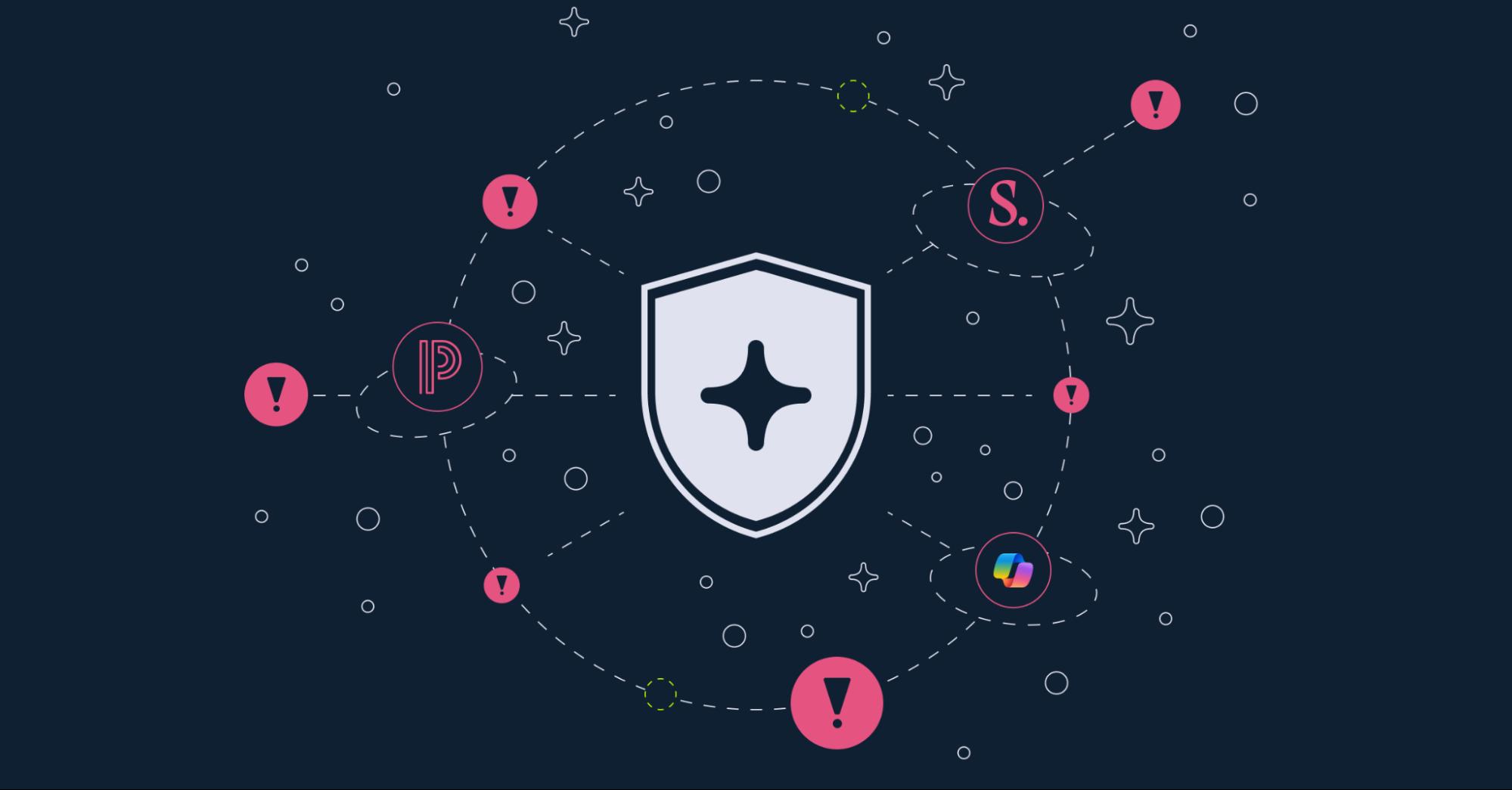9 Benefits of Multi-Factor Authentication (MFA) for SaaS App Security



What is Multi-Factor Authentication?
Multi-Factor Authentication (MFA) is a security system that requires multiple forms of identification before granting access to an account or application. It is designed to enhance security by requiring users to verify their identity through various methods, thus reducing the risk of unauthorized access. MFA typically combines two or more of the following factors:
- Something you know: This is usually a password or PIN.
- Something you have: This could be a smartphone, hardware token, or another physical device.
- Something you are: This involves biometric verification, such as a fingerprint, facial or voice recognition.
By combining these factors, MFA ensures that even if one factor is compromised, the others remain intact, making it significantly harder for attackers to gain unauthorized access to sensitive information.
2FA vs MFA
Two-Factor Authentication (2FA) and Multi-Factor Authentication (MFA) are often mentioned together, but the two have key differences. 2FA is a subset of MFA that specifically uses two distinct factors to verify a user's identity.
Example: A common example of 2FA is when a user logs in with a password (something they know) and then confirms their identity with a code sent to their phone (something they have).
MFA on the other hand, uses two or more factors to verify a user's identity. This could include a combination of passwords, physical tokens, biometric data, or other verification methods.
Example: An MFA setup might require a user to enter a password, provide a fingerprint scan (something they are), and respond to a push notification on their phone (something they have).
While 2FA is a form of MFA, the primary difference lies in the number of factors used. MFA can include more than two factors, providing an additional layer of security.
Types of Multi-Factor Authentication
There are several types of MFA, each offering unique benefits and levels of security:
- Email and Text Codes: Email and text codes are a common form of Multi-Factor Authentication (MFA). When a user attempts to log in, a unique code is sent to their email address or mobile phone number. The user must then enter this code in addition to their password to gain access. This method leverages the possession factor, as it requires the user to have access to their email account or mobile device. Although convenient, this method can be vulnerable to SIM swapping and phishing attacks.
- Biometric Authentication: Biometric authentication uses physical characteristics to verify a user's identity. Common biometric methods include fingerprint scans, facial recognition, and voice recognition. These methods are considered highly secure because they rely on unique biological traits that are difficult to replicate. Biometric authentication provides an inherent factor in MFA, adding a robust layer of security by ensuring that only the authorized user can gain access.
- Authenticator Apps: Authenticator apps generate time-sensitive codes that users must enter in addition to their passwords. Apps such as Google Authenticator, Microsoft Authenticator, and Authy are popular choices. Once set up, the app continuously generates a new code every 30 seconds. This method is highly secure because it requires physical possession of the user's mobile device and is resistant to phishing attacks. It leverages the possession factor in MFA, making it a reliable option for securing accounts.
- Security Keys: Security keys are physical devices that users must insert into their computers or tap on their mobile devices to authenticate their identity. These keys use cryptographic protocols to ensure secure communication between the key and the service. Examples include YubiKey and Google Titan Key. Security keys provide a high level of security as they are difficult to replicate and must be physically present with the user to authenticate. They represent a possession factor in the MFA framework.
- Hardware Tokens: Hardware tokens are similar to security keys but are often used to generate one-time passwords (OTPs). These tokens display a new code every 30 to 60 seconds, which the user must enter along with their password. They are standalone devices that do not require internet connectivity, making them secure against online threats. Hardware tokens are used in environments where high security is essential, providing a reliable possession factor for MFA.
- Time-Based One-Time Password (TOTP): Time-Based One-Time Password (TOTP) is a method that generates a temporary, time-sensitive passcode. These passcodes are typically generated by an application on a user's smartphone or a dedicated hardware device. Each code is valid for a short period, usually 30 seconds, after which a new code is generated. TOTP is based on a shared secret key and the current time, ensuring that each code is unique and difficult to predict. This method leverages both the possession and time factors, offering a secure and effective MFA solution.
9 Benefits of Multi-Factor Authentication
There’s no doubt that implementing Multi-Factor Authentication (MFA) is an essential step for companies to enhance their security posture. MFA offers several benefits that help protect against various cyber threats and improve overall security management. We have highlighted nine of them:
1. Mitigating the Risk of Account Compromise
MFA significantly reduces the risk of account compromise by requiring multiple forms of verification. Even if a password is stolen, the attacker would still need additional authentication factors, such as a fingerprint or a code sent to a mobile device, to gain access. This multi-layered approach makes it much harder for unauthorized users to breach accounts.
2. Strengthening Phishing Defense
Phishing attacks are a common method used by cybercriminals to steal login credentials. MFA adds an extra layer of security that makes it difficult for attackers to gain access even if they manage to obtain a user's password. By requiring a second form of verification, such as a biometric scan or a time-based code, MFA helps defend against phishing attempts effectively.
3. Proactive Security Culture
Adopting MFA fosters a proactive security culture within an organization. It emphasizes the importance of security and encourages employees to be more vigilant about protecting their accounts. By integrating MFA into daily operations, organizations can instill a mindset of continuous security awareness and proactive defense against threats.
4. Simplified User Experience
Contrary to the belief that MFA complicates the login process, it can actually simplify the user experience. With MFA in place, users can take advantage of Single Sign-On (SSO) solutions, which allow them to access multiple applications with a single set of credentials. This reduces the need to remember multiple passwords and streamlines the authentication process.
5. Access Control
MFA enhances access control by ensuring that only authorized users can access sensitive systems and data. It allows organizations to set up granular access policies based on user roles and risk levels. This means that even if a low-level account is compromised, attackers would not be able to access high-level resources without the necessary additional verification steps.
6. Secure Remote Working
With the rise of remote working, securing remote access to corporate networks has become a priority. MFA provides an additional layer of security for remote access, ensuring that employees can securely connect to the company's resources from anywhere. This helps protect against unauthorized access and data breaches in a remote work environment.
7. Regulatory Compliance
Many data protection regulations, such as GDPR and HIPAA, require organizations to implement strong authentication measures. MFA helps organizations comply with these regulations by providing a robust method of verifying user identities. Implementing MFA can demonstrate an organization’s commitment to securing sensitive data and adhering to legal requirements.
8. Mitigating Compromised Passwords
Passwords alone are often insufficient to protect against sophisticated cyber threats. MFA mitigates the risk associated with compromised passwords by adding extra layers of security. Even if a password is leaked or stolen, the additional authentication factors required by MFA can prevent unauthorized access to accounts.
9. Single Sign-On (SSO) Compatibility
MFA is compatible with Single Sign-On (SSO) solutions, which enhance user convenience by allowing access to multiple applications with a single set of credentials. This integration ensures that security is not sacrificed for convenience. By combining MFA with SSO, organizations can provide a seamless and secure login experience for their users.
Risks Connected With Not Using MFA
Failing to implement Multi-Factor Authentication (MFA) can leave a business vulnerable to various security risks. By understanding these risks, a company can better appreciate the importance of implementing MFA to enhance its security posture and protect against potential threats.
Below is a data table outlining some of the key risks associated with not using MFA:
SaaS Security & SSPM: A Broader Perspective

SaaS security involves various strategies and practices designed to secure SaaS environments:
- Access Control: Ensuring only authorized users can access sensitive data and applications.
- Data Encryption: Protecting data at rest and in transit from unauthorized access through encryption.
- Regular Audits and Monitoring: Continuously monitoring SaaS environments for suspicious activities and conducting regular security audits.
- Compliance Management: Ensuring SaaS applications comply with relevant regulations and standards such as GDPR, HIPAA, and others.
The Role of SSPM
SaaS Security Posture Management (SSPM) is essential for maintaining the security of SaaS applications. It provides continuous monitoring, compliance management, and security assessment to ensure SaaS applications are secure and compliant.
Key Functions of SSPM:
- Continuous Monitoring: SSPM tools continuously monitor SaaS applications for vulnerabilities, misconfigurations, and compliance issues.
- Risk Assessment: Identifying and assessing potential risks associated with SaaS applications and their configurations.
- Compliance Management: Automating compliance checks and ensuring SaaS applications meet regulatory requirements.
- Incident Response: Providing tools and processes for prompt and effective responses to security incidents.
Benefits of SSPM:
Implementing SSPM offers several benefits for organizations using SaaS applications:
- Enhanced Visibility: SSPM provides a comprehensive view of the security posture of all SaaS applications, enabling better management and control.
- Risk Mitigation: By continuously monitoring and assessing risks, SSPM helps mitigate potential security threats.
- Regulatory Compliance: SSPM ensures that SaaS applications comply with industry regulations, reducing the risk of legal penalties.
- Operational Efficiency: Automating security tasks and compliance checks through SSPM improves operational efficiency and reduces the workload on IT teams.
Conclusion
Securing sensitive data and maintaining strong security is a must in today's digital landscape. Multi-Factor Authentication (MFA) is a key component in enhancing SaaS security by adding multiple layers of defense against unauthorized access. From reducing the risk of account compromise to ensuring regulatory compliance, MFA provides significant benefits that strengthen an organization’s security.
Beyond MFA, adopting comprehensive SaaS Security Posture Management (SSPM) best practices is essential. SSPM enables continuous monitoring, assessment, and improvement of SaaS application security, ensuring ongoing compliance and protection against threats. Combining MFA with SSPM creates a strong security framework that protects critical assets and promotes a proactive security culture. As cyber threats evolve, implementing robust security measures will ensure businesses operate safely and efficiently, maintaining trust and confidence in their digital operations.

Gal Nakash
ABOUT THE AUTHOR
Gal is the Cofounder & CPO of Reco. Gal is a former Lieutenant Colonel in the Israeli Prime Minister's Office. He is a tech enthusiast, with a background of Security Researcher and Hacker. Gal has led teams in multiple cybersecurity areas with an expertise in the human element.

Gal is the Cofounder & CPO of Reco. Gal is a former Lieutenant Colonel in the Israeli Prime Minister's Office. He is a tech enthusiast, with a background of Security Researcher and Hacker. Gal has led teams in multiple cybersecurity areas with an expertise in the human element.



%201.svg)



















.svg)